Defence Policy
"Krab Upgrade is a Major Challenge". General Kuptel Discusses the Equipment Revolution in the Polish Armed Forces
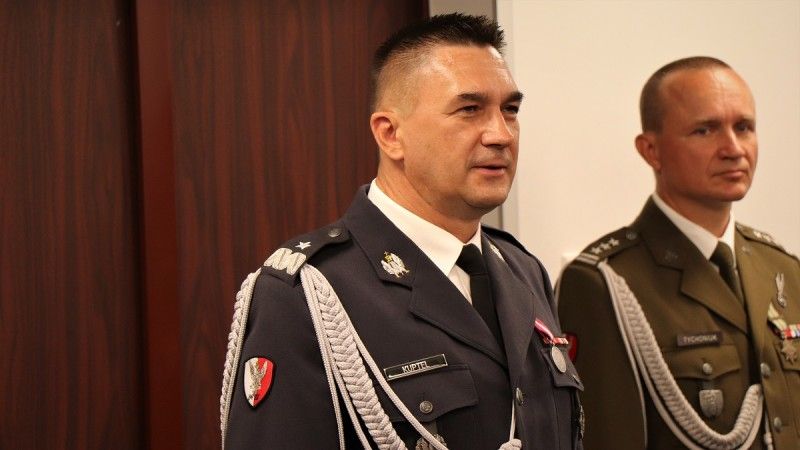
“K2PL is a key programme allowing for multiplication of the combat potential in the Armoured Forces. K2 main battle tanks that have been commissioned in the Polish Armed Forces since 2022 are a modern, and prospective platform that becomes one of the key battle systems the Land Forces use. The users express very positive opinions, both when it comes to the tank’s combat properties, as well as the operation”, Brig. General Artur Kuptel, PhD, Head of the Armament Agency stresses, talking to Defence24.pl.
The head of the Armament Agency also covered the issues as follows:
- Throughout the year 2023, the Armament Agency has signed agreements regarding air/missile defence systems at an unprecedented scale.
- The agreement concerning the P-18PL radars is a fundamental step forward, domestic efforts to manufacture radar sensors are growing stronger.
- We launch a whole spectrum of new programmes that, over 3 years, may result in the establishment of entirely new capabilities, also in the area of manufacturing ATGMs.
- We are evolving from procurement to project management structures.
- ZSSW-30 is one of the best turret systems in the world now. This has been possible thanks to perfect cooperation between the industry, and the armed forces.
- The Armament Agency is currently working on procuring an entirely new system, whose main task would be to neutralize unmanned platforms of different types.
Jędrzej Graf: General, recently the Armament Agency has been celebrating its second anniversary. This entailed large-scale procurement efforts, and many procurement processes are still underway. The scale of the programmes underway is undoubtedly much larger, than it was a few years ago. The modernization efforts are taking place in parallel, in several domains. Can you list three elements of key importance?
Brig. General Artur Kuptel, Ph.D., Head of the Armament Agency: All tasks pursued by the Armament Agency are relevant to the systemic transformation of the Polish Armed Forces, within the scope of technical modernization. It is worth recalling that directions, and priorities within that scope, are listed out within the Central Material Plans. Undoubtedly, the passing year 2023 has been a breakthrough year, when it comes to the creation of a layered, integrated air/missile defence system in the Polish Armed Forces. Throughout the year 2023, the Armament Agency has signed agreements regarding air/missile defence systems at an unprecedented scale. When it comes to the value, the biggest contracts include ones signed within the framework of the Wisła task, regarding the Patriot systems, with LTAMDS radars, and PAC-3 MSE missiles, with the US Government, and ones regarding the CAMM-ER launchers and missiles for the Narew system, that would be procured from the PGZ Group, within the framework of technology transfer.
Thanks to the implementation of those performance contracts, and further contracts that we are planning to conclude in 2024, the Polish Armed Forces will be getting an expansive, one of the most modern, NATO integrated air defence systems, along with the maintenance, servicing, and manufacturing assets. Let me add, that the Wisła system agreements come with an offset deal, acquired from Lockheed Martin, and Raytheon. We are also proceeding with an offset agreement involving Northrop Grumman, related to the IBCS procurement for the Integrated Air Missile Defence System that would connect Wisła and Narew systems.

Photo. Agencja Uzbrojenia/Twitter
Last year, a very critical agreement was also signed, on delivery of the P-18PL radars by PIT-RADWAR. We are returning to the meter band that, in specific conditions, offers good parameters regarding target detection at distances of even 400 kilometres. This is a very much-needed procurement, and also one of the Polish success stories, when it comes to radars. In 2023 we also started the deliveries of the upgraded Bystra radars, the first Polish AESA system. This is a fundamental leap ahead. The domestic efforts to manufacture radar sensors are growing stronger. This year we will be continuing our efforts in this area, as we have a very good foundation to do so. Last year, the test programme for the PET/PCL Passive Radar System was concluded. This equipment will allow us to detect and track air threats, even in the most adverse conditions, without uncovering the location where the sensor operates. Not only would that be a reinforcement for the air defence system, but also for the broadly understood reconnaissance, and electronic countermeasures. This is a kind of revolution, within the realm of capabilities of conducting airspace surveillance.
Last year also included deliveries and development contracts regarding the Pilica+ system.
In 2023 we also signed performance contracts regarding the Pilica+ system, including, among other equipment pieces, the aforesaid Bystra radars, and several other elements, ranging from CAMM launchers and missiles, SAM/AAA systems, to C2 systems and vehicles. The said system will be delivered by the Polish industry, and it will also capitalize on the already owned and operated Pilica systems, that have been quite successful. They would be given new capabilities, through the integration of short-range missiles, namely the very same missiles as the ones used in the Narew system, so that they would be able to support short- and medium-range systems. The Pilica+ programme is characterized by an ambitious delivery timeline, which would accelerate the establishment of capabilities within the short-range domain. Ultimately, the system should be expanded with the very much-needed Counter-UAS capability. Thanks to the implementation of the Pilica+ programme, the Polish industry would also grow its competencies - and those competencies would later on be used in the Narew programme.
One should also not forget about the deliveries underway. Apart from the Pilica deliveries finalized in 2023, Poland also received the key elements of the Patriot-IBCS systems ordered during the first phase of the Wisła programme, back in 2018. The first battery has just attained the baseline combat-ready status. Thanks to the above, the Polish Armed Forces have obtained a ballistic missile defence capability. That capability would be further developed during the second phase of the Wisła programme, based on the performance contracts that I mentioned already. Both „Little Narew” systems have already been commissioned, as the first systems in the history of the Polish Armed Forces, offering a multi-channel engagement capability against the air threats at a short range. These had been ordered in 2022, and integrated by the Polish industry.

Photo. St. szer. Sławomir Kozioł
Air defence has been a modernization priority for more than a decade now. What key tasks were pursued in other domains?
Another key undertaking that we were handling in 2023 is the 11 billion zlotys worth agreement concluded with the PGZ-Amunicja consortium, on delivery of artillery munitions. This is a result of many months of preparatory work, undertaken in collaboration with the Polish defence industry. The agreement’s scale exceeds all of the previous munitions procurement contracts, and it secures the delivery of assets required by the Artillery and Rocket component and also establishes a foundation for expansion of the domestic munitions manufacturing capacity. The agreement was signed within the framework of implementing the National Munitions Reserve programme pursued by the government, the key premise of which is to create conditions, within the Polish defence industry, needed to manufacture a major quantity of 155 mm munitions, and to provide the Polish Armed Forces with an uninterrupted delivery of munitions coming from more than a single manufacturer. Thanks to the above, the deliveries would be more secure which, in the current times, is key, from the point of view of the state’s security interest.
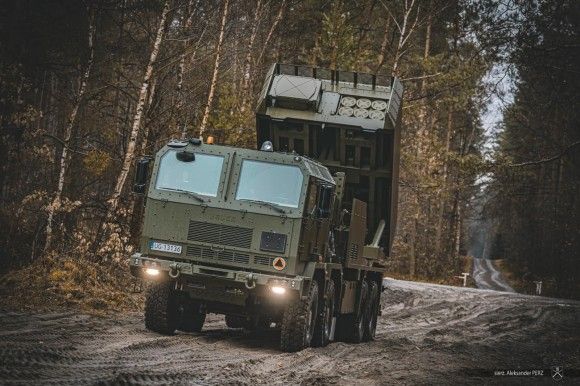
Photo. Sergeant Aleksander Perz / 18th Mechanized Division/fb
Equipment for the rocket and artillery units is the third key area - related to the previous one. Last year the Polish Armed Forces received the first elements of the Homar-A, and Homar-K rocket artillery systems, procured in 2019 and 2022 correspondingly. We have thus started the establishment of precise strike capabilities in the Polish Army, allowing the units to strike targets deep behind the enemy lines. As the Armament Agency we have also signed a framework agreement on the acquisition of another 486 launchers and several thousand rockets for the Homar-A system, and most of them, as assumed, should be manufactured by the domestic defence industry. We have also signed a performance contract with the PGZ-WWR consortium on the delivery of Jelcz trucks, including new-generation Jelcz vehicles, for all of the LM K-MLRS launchers covered by the performance contract.
And what about the tube artillery assets?
In 2023 the deliveries of K9A1 howitzers from the Republic of Korea continued. Furthermore, in late 2023 we signed a performance contract on delivery of further K9A1 systems, including ones in the K9PL variant. What is especially relevant, within the framework of the newly concluded agreement, is a major number of howitzers would be delivered in a variant using domestically manufactured components of the Krab howitzers. Additionally, the agreement includes a transfer of technologies, and establishment of absolutely key capacity within the Polish industry, regarding the maintenance of the howitzers, and manufacturing of one of the most modern propelling charges for the 155 mm artillery munitions.

Photo. Cprl. Piotr Szafarski/16th Mechanized Division/Polish Ministry of Defence
In parallel to the conclusion of the procurement agreement, we also took care of expanding the state logistical support system for the procured howitzers, and also of reinforcing the Polish defence industry within the scope of delivering munitions. Last year we also signed framework agreements on the delivery of more than 150 Krab howitzers, and a very broad range of support vehicles for the Krab/K9A1/K9PL fire modules, including vehicles that had not been procured for the initial modules, including AWR artillery reconnaissance vehicles, and ARVs. Thanks to the conclusion of those contracts, the Polish Army would receive a developmental variant of the Krab system, equipped with an autoloader unit. All Krab and K9A1/K9PL howitzers would be working within a homogeneous command, reconnaissance, and support system, delivered by the domestic industry.
Currently, the work on numerous R&D projects is coming to an end, including the aforementioned radars, as well as the ZSSW remote control turret system, or the IFV. What are the prospective directions for new R&D efforts in the Polish industry, and when can we expect agreements to be signed?
Let me start with the fact that we have conducted an in-depth analysis of the R&D works undertaken so far. That analysis clearly shows that a different planning approach should be adopted by us for future programmes. The timelines for those projects and the individual stages of those undertakings cannot be spread across longer, and longer timelines. We need to be focused on getting the results as quickly as possible, following the „product focus” principle. Another issue is the process associated with the progress of the work itself. If some conflicting issues emerge along the way, they need to be clarified in an ongoing manner, in close cooperation with the industry. This would optimize the finalization of projects, and subsequent commissioning of the new equipment, which is our key objective here.

Photo. WB Group.
UAVs can be viewed as another area. Thanks to the efficient cooperation with the manufacturer, we have already introduced the 3.6 variant of the FlyEye UAV, taking into account the experience gathered during the ongoing War in Ukraine. We want to develop this, and other UAV systems, involving the domestic industry. We are also very much interested in the development of the Future Common Missile SAM - it should complement the Wisła and Narew systems in the Polish integrated air defence framework. We do recognize the requirement to use such an effector, and cooperation with the partners during the technology transfer regarding the CAMM missile creates a solid foundation for us to pursue this project. Work is already underway.
One of the areas in which urgent reinforcement is needed in the Polish Armed Forces, and where the industry has presented solutions already, is the anti-tank defence, involving the use of modern munitions, including thermobaric munitions. Are development efforts planned, within that scope?
We launch a whole spectrum of new programmes that, over 3 years, may result in the establishment of entirely new capabilities, also in the area of manufacturing ATGMs. One of the elements that we are initiating is a solution making use of the experience gathered, during the Pirat ATGM project. All of the above should, in the short term, create an entirely new qualitative leap in the Polish defence industry which would be used in the key area, namely the anti-tank capabilities of the Polish Armed Forces.
We will also strive for as broad use of thermobaric technology in domestically manufactured munitions, as possible, from artillery shells, rockets, missiles, and ATGMs, down to the level of individual weapons. Let me add that during the implementation of R&D works, we eagerly take into consideration the Polish businesses, regardless of the ownership form, to address the long-term needs of the Polish Armed Forces, as per the provisions of the National Security Strategy.

When it comes to building the combat platforms, within the framework of research and development projects, not only would we be focusing on the development of the baseline variants of the vehicles, but we would also be developing comprehensive combat systems, with logistics or engineering support elements included. For instance, in the NPBWP Borsuk programme, not only are we focused on the IFV itself, but also on a whole range of support vehicles, such as the Żuk reconnaissance platform, Oset C2 vehicle, Gotem MEDEVAC vehicle, Gekon ARV, Ares CRBN reconnaissance vehicle, and Jodła engineering transporter. We would be adopting a similar approach for other programmes as well.
As we are discussing Borsuk, what progress has been made in the IFV programme itself? Last year a framework agreement was signed, but there was no success in signing the performance contract.
The Borsuk New Amphibious Infantry Fighting Vehicle programme is progressing efficiently. There is a whole list of criteria that need to be met throughout the qualification tests programme before the vehicle is approved for series manufacturing though. The programme is being implemented under the auspices of the National Centre for Research and Development, and in 2022 it was expanded, with four extra prototypes. This made it possible to accelerate the preparatory process, preceding the commissioning of the Borsuk vehicle. However, many factors have caused the development work stage to extend to the current year. This, however, does not mean that the programme is in crisis. It shows, however, that the industry and the armed forces cooperate fully, within the scope of finalizing the product.

Let me add that Borsuk stands a chance of becoming a very modern infantry fighting vehicle, with a unique set of capabilities. ZSSW-30 remote-controlled turret system is the key element of the Borsuk weapons (the same applies to the Heavy IFV (CBWP) platform), already commissioned on the Rosomak APC. ZSSW-30 today has become one of the best turret modules in the world. And this has been possible thanks to perfect cooperation between the industry, and the armed forces. We want to adapt the ZSSW-30 programme experience across other projects and implement them in a similar manner, which is well exemplified by the CBWP programme.
How does the Armament Agency perceive the K2PL main battle tank programme? What stage that programme is in?
K2PL is a key programme allowing for the multiplication of the combat potential in the Armoured Forces. K2 main battle tanks that have been commissioned in the Polish Armed Forces since 2022 are a modern, and prospective platform that becomes one of the key battle systems the Land Forces use. The users express very positive opinions, both when it comes to the tank’s combat properties, as well as the operation. That gives us a foundation for transitioning to the next phase, namely the K2PL programme - procurement of a main battle tank aggregating the domestic equipment solutions, for the sake of achieving a synergy effect.
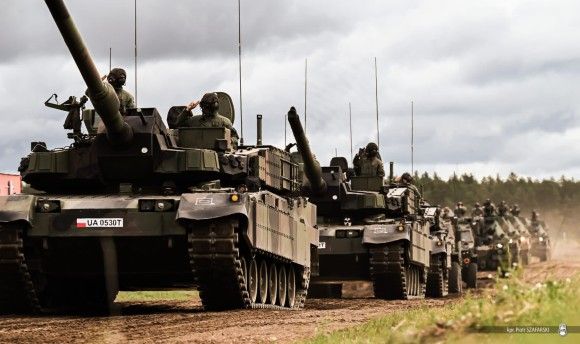
Photo. Polish Ministry of Defence/X
Talks are currently underway, on the configuration of the final version of the tank, meeting the expectations of the Polish Army. We are taking into account the experiences gathered during the use of the first two companies, delivered in 2022 and 2023. These conclusions are very valuable, and they allow us to further develop the K2 main battle tank, up to the K2PL configuration, in line with the needs of the Polish Armed Forces.
The involvement of the Polish industry is very important here. We do recognize the effort and involvement of the consortium that is still engaged in talks on the division of work, in the case of tank manufacturing. The Armament Agency is currently focused on negotiation regarding the K2PL main battle tank configuration, to ensure the proper capabilities needed by the Army in the current, challenging security situation. It needs to be emphasized that it is the Polish Polish Armed Forces that define the requirements, and thus we cannot allow for a technological regress of modern equipment, masked by the label of Polonization. The proposals made by the Polish industry need to be at least on par with the Korean technological developments, with simultaneous guaranteed competitiveness.
How do you perceive the role of the K2PL main battle tank, and main battle tanks operated by the Armoured Forces in general, on the modern battlefield, also within the context of the recent conflicts?
Let me just add that the trends in the development of the modern battlespace, considering the context of the recent conflicts, including the war happening on the other side of our eastern border, in Ukraine, clearly show that modern main battle tanks still play a relevant role on the battlefield. Thus the expansion of the armoured units is very important, from our point of view, along with the commissioning of a proper number of modern main battle tanks.
In the early days of its existence, the Armament Agency was focused on signing defence procurement contracts. When more of those contracts are underway, the tasks assigned to this body may change. How does the Agency evolve?
We are evolving from procurement to project management structures. The number of tasks underway that emerged in recent years, and those planned to be underway in the coming years, placed alongside the HR structure, calls for continuous tailoring of the structures. For the Armament Agency and the subordinated entities to be efficient, their structure is continuously monitored and optimized, as the tasks assigned dictate. We have transitioned to project management - this is a work scheme that has already been adopted by the Armament Agency. The main objective of the Armament Agency is to procure military equipment that is then commissioned, and a complex support and lifecycle management system is established for that equipment. We are placing more and more emphasis on this aspect, and we are fully aware that technologically advanced equipment is being introduced, and that equipment would demand an adequate approach to the operational use, and the use of combat capabilities.
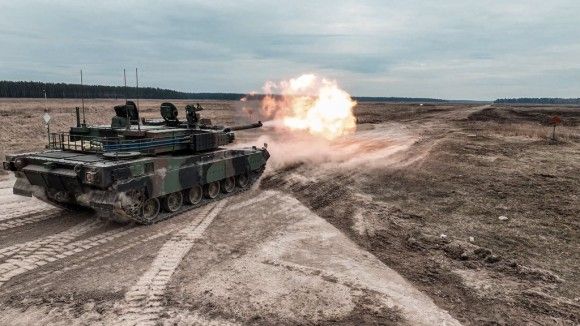
Photo. General Command/X
Within the framework of implementation of the individual project, most of our involvement (probably up to 80%, as I assess) is related to the management of contracts that have already been signed, commissioning of the equipment, deliveries, and related lifecycle support. This requires the relatively biggest workload on our part. Achieving a consensus involving the industry, negotiating the contracts, and selecting of proper equipment constitutes around 20% of our work.
Have any changes been made, concerning the procurement processes? A significant acceleration of those could have been noted in recent years.
Project management also means that we transitioned to a different way of handling the procurement processes. The Agency functions based on the results, while the specific procedures are just means, and tools, that are used to reach the ends: acquisition, commissioning, and operation of modern equipment meeting the modern battlefield requirements in the Polish Armed Forces. In parallel we are managing and proceeding with around 400 agreements and procedures, thanks to a broad-scale implementation of project management. A similar approach has been adopted by us when managing the research and development studies, and thus we have implemented changes aimed at rapid implementation of the results, so that they quickly become operable, which I have mentioned earlier.
Let me add that before I took the lead at the Armament Agency, I graduated from courses and internships in the United States, that have expanded my knowledge within the scope of defence procurement. The US reality is based on trust, where handing over a big budget to the project manager, along with freedom of action is a norm - in line with the regulations in force, of course. The results were achieved in a relatively short time. The Armament Agency functions similarly these days. We are aware of both the security challenges, as well as the evolution of the battlefield requirements.

The Armament Agency, primarily, should be viewed as a team of involved specialists and experts who, with great determination and sacrifice timely deliver on the tasks at hand, also maintaining the top quality of the work performed, bringing benefits to the Polish Armed Forces, and the Polish national security. Thus I am very grateful to the whole team for its involvement and giant contributions, workload-wise, without which the Agency would not be able to function.
You are also the Polish Ministry of Defence Plenipotentiary for Implementation of Unmanned Systems. We see a rapid evolution in this area. What approach is adopted, at the Armament Agency? Will the unmanned systems push out their manned counterparts, or will they be a complementary asset?
We work on numerous tasks related to unmanned systems at the Armament Agency, not just UAVs, which are most common in the Polish Armed Forces, but also with regard to land and naval unmanned platforms. Undoubtedly, they create an entirely new set of capabilities, and the scale on which the Polish Armed Forces would be using them is going to go up - which is also the purpose of the work that we do.
In general, I can say that unmanned systems cannot replace the manned platforms fully just yet. They constitute support platforms, complementing and reinforcing the impact the manned platforms may make. The programmes that we are engaged in at the Armament Agency, regarding the procurement of unmanned systems, do take into account the interoperability with manned systems. The unmanned systems, at the current stage of their development, will not replace, for instance, manned helicopters or planes, but they would be precious complementary assets, as the aircrews remain responsible for interoperability with the troops on the ground.

Photo. Grupa WB
A similar situation would occur in the land domain. The unmanned platforms would be working with the manned systems, and soldiers fighting in the area of operations, reinforcing their capabilities. For many reasons, also tied to decision-making in engagements, and coordination, they would not be allowed to gain full autonomy. We are also interested in aerial unmanned platforms of great capabilities, within the framework of the Harpy Claw (Harpi Szpon) programme. Nonetheless, these would be coordinated by the pilots of manned aircraft.
Unmanned platforms, UAVs in particular, can also be mass-employed by the adversary.
One cannot forget about the role of counter-UAS systems on the modern battlefield, which has been proven by the war in Ukraine. The Armament Agency is currently working on procuring an entirely new system, whose main task would be to neutralize unmanned platforms of different types. The main assumption is to acquire, as quickly as possible, a mobile counter-UAS system that would offer an optimal cost-effectiveness ratio. Finalizing this task, we would make use of the experience gathered during the armed conflicts so far, along with the latest technologies available, within the scope of kinetic and non-kinetic effectors, radars, and command systems.
In 2022 and 2023 a couple of procurement processes were launched, aimed at a large-scale acquisition of helicopters. Although the AW149 contract has been signed, with deliveries underway, we are still waiting for agreements regarding the Apache Guardian, S-70i Black Hawk, and AW101 helicopters to be finalized. Are these procurement processes continued, or are any changes or cuts expected?
The Armament Agency is engaged in talks in all of the helicopter procurement programmes launched in the years 2022 and 2023 - procurement of the AH-64E Apache Guardian helicopters from the US Government, and procurement of two helicopter types for the Air Mobile units: S-70i Black Hawk from PZL Mielec, and AW101 from PZL Świdnik.
When it comes to the S-70i Black Hawk helicopters, we are analyzing different variants for this procurement process to progress, including partial procurement of armament and equipment from the US Government, using the FMS procedure - scenario as such has some specific advantages. However, this does not change the fact that we are still proceeding with the procurement of helicopters from the PZL Mielec facility, expected to work with the Apache Guardian gunships.
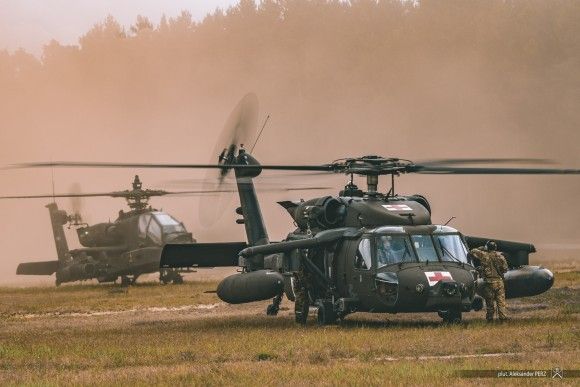
Photo. Plut. Aleksander Perz/18 Dywizja Zmechanizowana
Currently, we are launching a procedure aimed at acquiring 24 training helicopters and simulators. We are establishing a complex system for joint operations, within the scope of different air platforms.
Is the procurement of 96 Apache Guardian helicopters still on the table? This is several times more than initially planned for the Kruk programme.
The Armament Agency is proceeding with the procurement of 96 AH-64E Apache Guardian helicopters, as per the FMS request sent to the US, and the approval we obtained after the State Department was notified by the US Congress. I do confirm, that number is still valid and aligned with the requirements assessment in the Polish Armed Forces, which are placed at the foundation of the launched Apache Guardian procurement.
According to the results of the assessment of the emergence of the basic national security interest, the AH-64E procurement is carried out within a procedure envisaging the use of offset. We signed one offset agreement last year, with Lockheed Martin. For further areas, advanced offset negotiation is underway. I would not hide the fact that the whole procedure and the Apache procurement agreement are very complicated. It is a highly modern weapons system designed for interoperability with other systems, such as the Abrams main battle tanks, or UAVs. At the same time, procuring 96 helicopters, we want, within the framework of the offset deals, to secure capabilities that would allow us to efficiently support these gunships throughout their lifecycles, using the domestic industrial potential.

Photo. Maciej Nędzyński/CO MON
Last year, a procurement process was launched, regarding the Orka-class new generation submarine. What stage that programme is in?
The Orka programme continues. Last year we submitted a request to the industry, within the framework of preliminary market consultation. Talks are underway, on making the proposals we received within that scope, more detailed. The Armament Agency is currently analyzing 7 designs in which we are interested, and regarding which we are engaged in talks with the potential contractors.
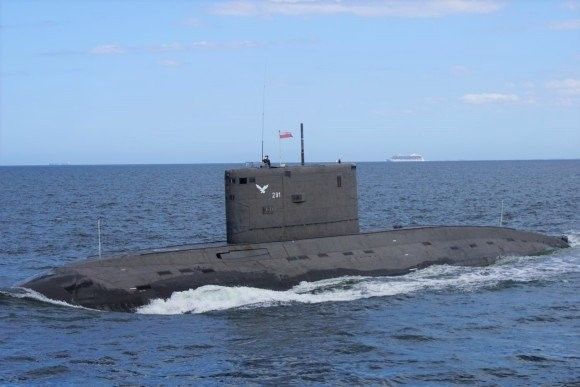
Photo. Jarosław Ciślak/Defence24.pl
Orka new generation submarine, alongside the Miecznik programme, is one of the two largest modernization programmes pursued by the Navy. We assume that the new submarines would deliver multi-faceted capabilities of covertly conducting operations in different naval conditions, and they would also be able to detect and counter different classes of enemy submarines and surface combatants. Apart from that they would be able to engage targets in land and air domains, with the use of missile systems, thus becoming a major support asset for the joint reconnaissance and strike system of the Polish Armed Forces.
I would like to stress, however, that time is also a key factor for the Armament Agency when it comes to the Orka programme. Poland wants to recover and expand its capabilities to conduct submarine operations as quickly as possible, and this is what the current security situation requirements dictate.
Let’s revisit the Artillery and Rocket Artillery Units for a minute. Both Homar-A, as well as the Homar-K programmes are waiting for further performance agreements. The Homar-A programme is a large-scale one, as it pertains to almost 500 launchers. A small number has been procured so far. In what scope would those programmes be continued?
The Homar-A programme will provide the Polish Armed Forces with the highly desirable capabilities to act against targets deep behind the enemy lines. This is a true revolution and a leap-like increase of the combat potential, the establishment of which began from scratch. At the same time, thanks to the programme’s structure adopted, Homar-A is going to be integrated within the existing command system used in the Rocket and Artillery component, which would facilitate a broad implementation of that system and ensure interoperability with other battlefield reconnaissance systems.

We are currently in the middle of a negotiation regarding another Homar-A performance contract. The scope of that contract, when it comes to the number of launchers, depends largely on the result of the negotiation in question. Let me add that a programme like Homar-A, with its breadth and level of complication, does confirm the righteousness of concluding framework agreements. Thanks to the fact that we signed a framework agreement in 2023, we can divide this large, ambitious programme as needed, into smaller orders. We are still maintaining that ultimately the launchers, and at least one type of munitions would be license-manufactured in Poland, ensuring the security of deliveries.
This year we are also willing to finalize the second performance contract for the Homar-K programme. The first phase of the project efficiently moves forward, as after the contract was signed in 2022, several launchers are already operated by the 18th Mechanized Division, and they have already been integrated with the Topaz command system, and the Jelcz base platform. These capabilities are new as well. Further deliveries are expected to happen this year. Meanwhile, the performance contract that we are willing to conclude this year will ensure, apart from the delivery of extra equipment and munitions, a transfer of technologies needed to manufacture the launcher in Poland. I would like to add that we also assume that 122 mm rockets used in the Langusta system are expected to be integrated with the Homar-K solution, which will further expand its combat capabilities. Furthermore, within the framework of the third performance contract, we plan to use a transfer of technologies to establish a manufacturing capacity in Poland, at least regarding the 239 mm guided rockets.
I would also like to ask how the Armament Agency perceives further development and procurement of the Krab self-propelled howitzers. They have proven their worth in combat in Ukraine, a framework agreement was signed last year, while HSW, the manufacturer, declares that the manufacturing capacity has been increased.
I would like to start with the fact that we also highly praise the Krab howitzers, as one of the key products in the portfolio of the Polish defence industry, and one of the key systems in the Polish Armed Forces« arsenal. The fact that we ordered the South Korean K9A1/K9PL systems is related to the fact that some of the existing Krab inventory has been transferred to Ukraine. Kyiv also ordered the newly manufactured howitzers and the manufacturing capacity at HSW has been allocated to that. At the same time, a process began in which the Armed Forces« structure was expanded, and the replacement of the post-Soviet artillery assets was accelerated. For many reasons, also due to the limited availability of spares and ammunition, this is an urgent matter.

Photo. kpr. Sławomir Kozioł
We are currently engaged in talks with HSW, on signing annexes to the agreements signed in 2016 and 2022, to accelerate the deliveries of howitzers. Let me recall that the delivery timeline that has been valid since December 2022 assumes that the delivery of Krab guns would begin in 2027, but we would be eager to commission them earlier. The Armament Agency and the Polish Army are ready to do that. Soon we also plan to sign performance contracts aligned with the 2023 framework agreement.
Modernization of the Krab howitzer is a major challenge ahead, that needs to be tackled jointly, by the Armament Agency, and the industry. This refers mainly to the introduction of an automatic ammunition feeding system which would make it possible to reduce the crew to 3 persons. We assume that the implementation of an autoloader is a necessity and a natural next step in the development of the Polish howitzers. This also stems from the challenges tied to demographics - the Polish Armed Forces are fully aware of that. We still want to develop Krab, and other systems, jointly with the Polish defence industry.
Thank you for the conversation.
